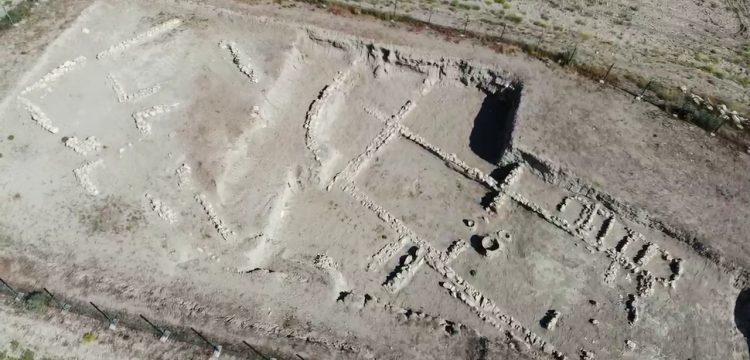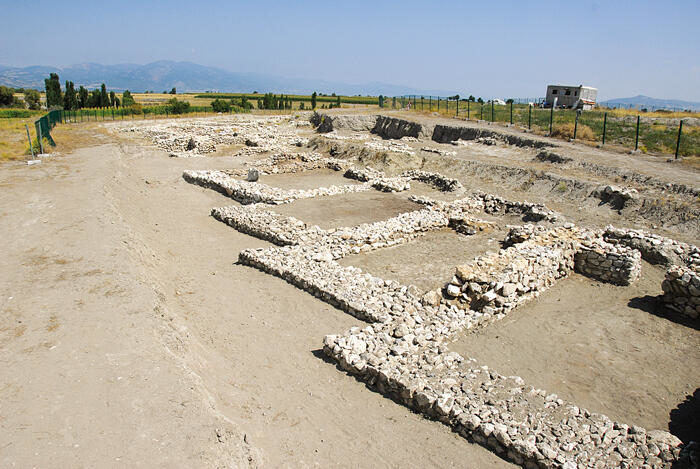
© Arkeolojik Haber
An excavation team working at Hacılar Great Mound are jovial after finding a second monumental gate in the province of Burdur,
unveiling a discovery that a local kingdom ruled the region in southwestern Turkey for some time. The Great Mound is located in the village of Hacılar, where Hacılar ceramics were discovered by the British archaeologist James Mellaart in the late 1950s. Excavations have been carried out in the field for eight years, and the city's second monumental gate was discovered this year.
The second monumental gate is located 200 meters from the first one in the settlement, which stood resistant to foreign threats with a chain of rooms called Casemate and was surrounded by an advanced defense system.
The presence of the second monumental gate, as well as the other findings obtained during the excavations, strengthened the idea of the existence of a local kingdom of the Hacılar Great Mound.
Speaking to the state-run Anadolu Agency, the head of the excavations, Istanbul University Archaeology Department's Professor Gülsün Umurtak, said that they reached the 350-meter defense system at the center of the mound.

© Hurriyet Daily News
She said that the casemate system was applied uniquely and very strongly in Hacılar, and that they found nearly 40 casemates in their eight-year excavation works.
Emphasizing that they repaired every structure with natural materials, Umurtak said that this year's work provides them important information about the defense system.
This season was very productive, she said, adding that they reached a big gate in the new trenches opened in the south of the mound.
"The second gate has monumental dimensions. It is over 20 meters in length and five meters in width. The huge-size casemates are found on both sides of the gate. This way, we reached a very impressive corner of the city. We think that in the coming years we will find the third or fourth gates in different parts of the city. All these things and the stone wall system, which reaches 2.5 meters in width here, is extraordinary for the early 3,000s. It is not easy to build two monumental city gates 200 meters away from each other. We already thought that we were excavating a local kingdom but after we found the second monumental gate, we can now say for sure that there must be a local kingdom. There are many mounds around it. They, too, were administratively and economically dependent on this great system."
Agriculture and animal husbandry developed in the mound, Umurtak said, adding that the remains of the plant found in the excavations indicated the rich diversity of the natural environment.
"We are in a region with rich water resources. There is a rich repertoire of pottery. When we look at the sum of all these, we can say more clearly that there is a local kingdom center here."
Professor Refik Duru, who started the first mound excavations in the region, said that Burdur and its immediate surroundings are a place that gives extraordinary prehistoric settlements and finds, adding that they are happy to work in such a place.


Reader Comments
to our Newsletter